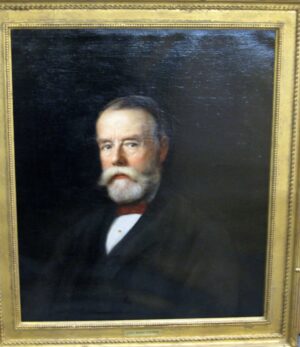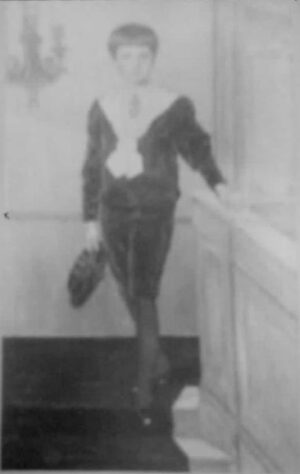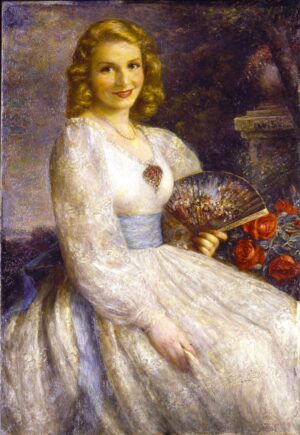The Terry family came from Cienfuegos, Cuba. Antonia Sanchez was born there on 13 June 1858, and died in Paris 19 December 1918 and in 1875 married Francesco Terry who was born in 1850 and died in 1908 to a family of Hispano-Irish origins that made its fortune in sugar plantations. His father was sugar baron Tomás Terry, a Venezuelan-born Irishman known as the “Cuban Croesus”, and his mother was Teresa Dorticós y Gómez de Leys, a daughter of Andrés Dorticós y Casson, the millionaire Governor of Cienfuegos, Cuba.
—
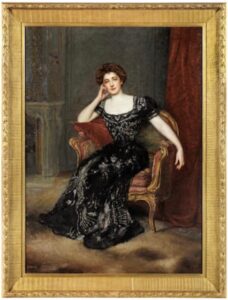
The portrait in its original frame.
The Newport Herald, Thursday, September 16, 1897 stated that Muller-Ury had painted the portrait of ‘Mrs. J. Terry.’ Cholly Knickerbocker, the columnist of the New York Journal, on Friday, January 7, 1898, reported that Mrs. Terry’s portrait was the piece de resistance on display at a reception given by the artist in his studio the day before. It was reported in Town Topics, March 31, 1898, as being exhibited at the Schaus Gallery prior to being shipped to France. The pencil inscription on the frame suggests that this it was from this date that the picture was exhibited at the Schaus Gallery. According to the New York Herald, April 10, 1898, two portraits were painted by Muller-Ury of Mme. Terry, “…one was of life size and the other of smaller dimensions”, but this reference to a second picture may actually be a reference to the picture of her daughter whose whereabouts is unknown.
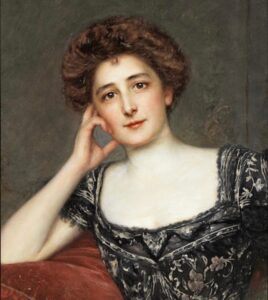
Detail of the head of the portrait of Antonia Terry
The picture was probably sent in 1899 to the Terry’s home in France where they leased the Château de Chenonceau 1896-1908. The de Castellane family were to inherit the Chateau de Rochecotte, near Langeais, in the Loire valley from their great-grandmother the Duchesse Dorothée de Dino, Talleyrand’s daughter. Antonia Terry was buried in a mausoleum in the grounds of the chateau Rochecotte which was bought in 1934 from his brother-in-law Stanislas de Castellane by Emilio Terry, the son of the sitter and great French interior designer, and in 1969 he left it to Henri-Jean de Castellane who lived there until 1978.
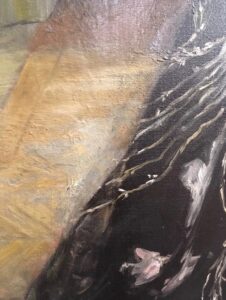
The pentimento to the left of Mme Terry’s black dress made visible by cleaning.
The picture was cleaned and the frame regilded when owned by John Lewis OBE. The cleaning revealed a pentimento along the left hand side of Mme Terry’s black dress where he reduced its size. Close examination, however, reveals that he extended the dress to the right over the rose pink Gobelin tapestry of the Louis XV chair.
![TERRY, Mme. Francesco [Francois] (Antonia Sanchez)](https://www.muller-ury.com//wp-content/uploads/2017/11/logo.jpg)
![TERRY, Mme. Francesco [Francois] (Antonia Sanchez)](https://www.muller-ury.com//wp-content/uploads/2017/11/logo2.jpg)
![TERRY, Mme. Francesco [Francois] (Antonia Sanchez)](https://www.muller-ury.com/wp-content/uploads/2017/10/Antonia-Terry-scaled.jpg)
